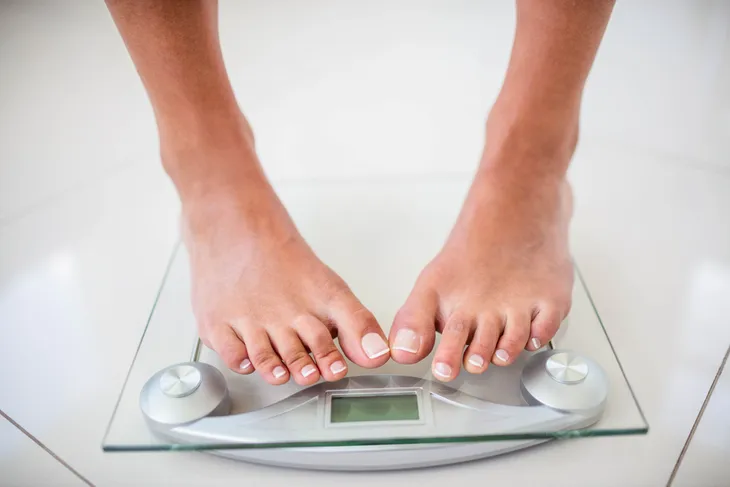Osteoarthritis (OA) is the most common joint disorder in the U.S., affecting about 27-million people, according to Healthline. It’s a painful form of arthritis caused by wear and tear on the cartilage that provides cushioning between bones, which leads to pain and limited mobility.
However, while there are treatments to help the pain and inflammation, there are also some lifestyle changes you can make to help improve the condition so you can improve your quality of life. Here are seven suggestions for those suffering from osteoarthritis…
Want senior content delivered straight to your inbox? Sign up for our exclusive email list and receive articles and news on diet & nutrition, fitness, and mental health dedicated specifically to our senior audience!
1. Add Lots of Light Exercise
It’s important to keep moving when you have a joint-limiting condition, or you risk losing more range of motion while adding to stiffness. Healthline suggests taking on “low-impact” exercises that still address improving your strength as well as aerobic training.
One way to achieve this is by doing some exercises in a pool, which can dramatically lower the impact on your joints by supporting your weight. Water lets you move gracefully, but also provides enough resistance to get your blood pumping and your muscles toned. Check out these exercises to help manage osteoarthritis!
2. Watch Your Weight
Having additional mass on your body can put unnecessary strain on your knees, making your arthritis symptoms worse. The Arthritis Foundation has a wide range of suggestions for helping you take off some excess weight without extreme dieting.
The foundation also lists the benefits of dropping some pounds if you’re suffering from arthritis, such as reducing pressure on your joints, easing inflammation (and associated pain), and cutting risk of developing other chronic diseases such as diabetes and even cancer.
3. Get Some Rest
Your body – and your joints – could use a time-out once in a while, and Healthline explains it’s important to get adequate rest if you have osteoarthritis. Getting rest is also important in helping prevent the condition in the first place, giving your joints and muscles a chance to recover after activities.
Your joints will tell you when they need a break, as they will become “swollen or achy,” it adds. Once you’ve reached this level of discomfort, try to avoid intense activity for at least 12-hours. “Letting an injured joint heal helps reduce the risk of developing OA there in the future,” it adds.
4. Monitor Your Blood Sugar
What does sugar have to do with osteoarthritis? Well, according to the Arthritis Foundation, if glucose is running rampant in your system, it could increase the formation of molecules that contribute to stiffening of the joints.
The source also notes there’s research that shows diabetes can boost the chances of developing OA, and diabetes can trigger “systemic inflammation that leads to cartilage loss” making the whole situation worse. You can also end up with Charcot joint (also known as neuropathic arthropathy) that causes joint deterioration from nerve damage associated with diabetes, adds the Mayo Clinic.
5. Change Your Diet
HealthCommunities.com explains that what you’re eating could be leading to more pain associated with OA. Not only will improving your diet possibly help you lose some weight, which we already mentioned is important in cases of arthritis, but can also benefit your entire health picture.
The source suggests eating more fish (presumably for the omega-3 acids) while maintaining “moderate amounts” of lean meat. Switch your cooking oils to cold-pressed olive oil or flax oil, as this can help reduce inflammation from OA, it adds. You may also want to try some spicy foods (like chili peppers) that contain Capsaicin, a natural painkiller. If you can’t handle it hot, there are Capsaicin creams as well.
6. Cut Smoking and Drinking
We know this is easier said than done, but the pain from OA can be made worse by alcohol, which may increase your urge to self-medicate. A post on the U.S. Library of Medicine outlines a study about the effect of chronic drinking on OA, noting it may increase development of the condition.
The study involves groups of mice (alcohol-fed and controlled), with researchers measuring key indicators along the way (such as a drop in anti-inflammatory properties in the alcohol-fed group). The post claims it’s “the first evidence that chronic alcohol consumption may be a novel risk factor for the development of OA”. Meanwhile, as you should already know, smoking is bad for many reasons, one of them being that it suppresses the immune system. It’s also been linked to more severe cartilage loss and pain.
7. Stay Connected
One pitfall people with OA can fall into is cutting themselves off from friends and family, and not getting the support they need. This can also limit how often you venture out to see friends and family, which won’t do any favors for improving your physical condition.
WebMD notes joining a support group for OA can provide a great way to share your feelings about the condition, while continuing to do things you love and spending time with loved ones goes a long way in maintaining a positive outlook. “Focus on your abilities rather than your disabilities,” it notes.










